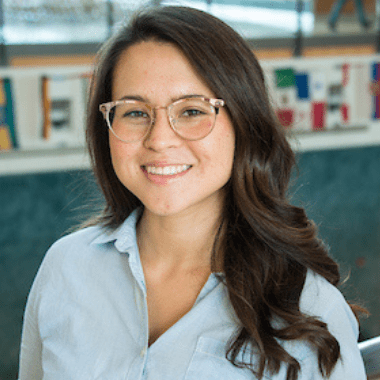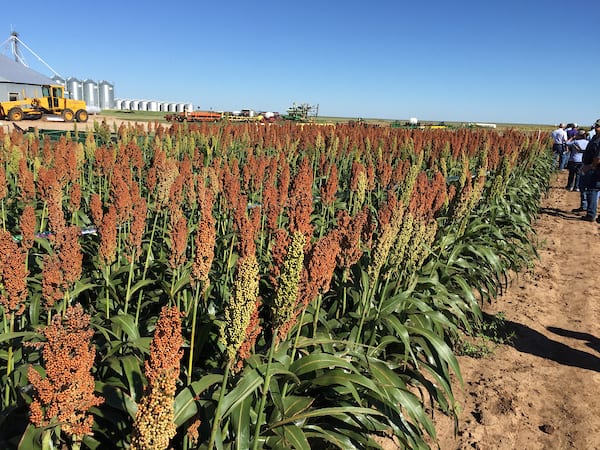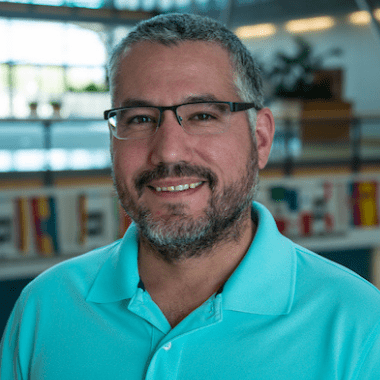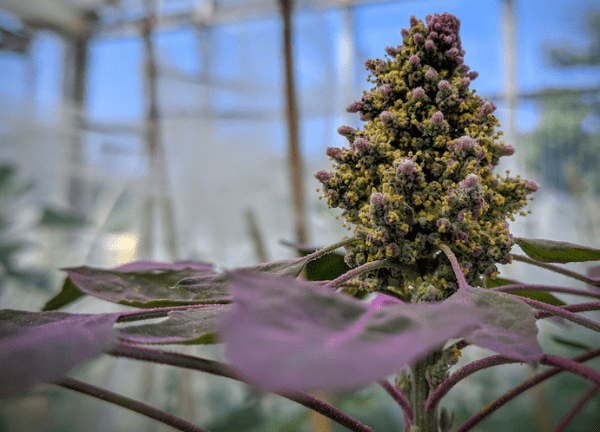Lightning Strikes Twice: Postdocs in Same Lab Win NIFA Fellowships
It’s always special when a postdoctoral associate lands a prestigious national fellowship, but when two postdocs both win awards? At the same time? In the same lab?
That’s exactly what happened in spring 2020 when Anna Casto, PhD, and Jose Tovar, PhD, both postdoctoral associates in the Gehan lab at the Danforth Center, were simultaneously awarded the prestigious USDA-NIFA Postdoctoral Fellowship.

“I don’t know if it’s happened before, but Jose and Anna are both extremely talented and hard-working researchers. It is a privilege to work with scientists like them,” says Danforth Center Principal Investigator Malia Gehan, PhD.
Let’s meet these early-career scientists and learn a little about their projects.
Making Sorghum Cold-Tolerant

Anna Casto completed her PhD in molecular and environmental plant science at Texas A&M. When it came time to consider a postdoctoral appointment, she remembered a talk given by Danforth Center Principal Investigator Malia Gehan, PhD, at the American Society of Plant Biologists conference. “I had known and admired the work of the Danforth Center for some time,” says Casto, so she reached out and Gehan encouraged her to apply.

Sorghum field
Casto had found her interest: sorghum genetics. “Sorghum is an important grain crop in Africa and Asia. It’s also an important biofuel feedstock being researched in the US. But sorghum’s growth range is limited because it’s sensitive to cold temperatures. I wanted to learn why, especially since there’s some indication that early sorghum first cultivated was less cold sensitive.”
Sorghum is a crop first domesticated in Africa 5,000-8,000 years ago. A drought- and heat-tolerant plant that grows where other crops can’t, sorghum is a “super-converter” of solar energy to biomass. But currently at temperatures less than 59 F, sorghum can have delayed growth and limited germination, which has limited adoption by would-be bioenergy growers in the United States and elsewhere. Casto’s project that won the USDA-NIFA Fellowship is called “Enhancing Cold Tolerance in Sorghum bicolor by Exploring Crosstalk Between Cold and Acclimation and Abscisic Acid Signalling.”
She explains: “Some of the research in maize/corn, which is a relative of sorghum, indicates that cold tolerance might be influenced by plant hormones. We have exciting preliminary results that treating sorghum plants with the plant hormone abscisic acid might improve cold tolerance.”
Making Quinoa Heat-Tolerant

Jose Tovar hails from Lima, Peru, along the coast—but that hasn’t stopped him from specializing in crops of the mountains. After obtaining a Masters in plant breeding from Universidad Nacional Agraria La Molina in Peru and working at the International Potato Center in Lima for several years, where he specialized in sweet potato, he came to the U.S. for graduate school. He completed a PhD in molecular biosciences at Arkansas State University, then Tovar undertook a new project when he entered the Gehan lab at the Danforth Center. At roughly 3,500 miles from home, he started working on a new crop: quinoa.

Quinoa plant in Danforth Center greenhouse
“What grabbed my interest about quinoa was that even though I had never done research on it before, I knew of its importance for my country and its potential as a nutritious grain that can grow in adverse environments. Having worked in projects aimed at combating hunger, malnutrition and helping resource-poor farmers increase their income, I am very aware of the dire need for access to not just more food, but for nutritious food in many parts of the world.”
“Quinoa is a common food in Peru, and everyone eats it every once in a while. I’m from the lowlands, but quinoa is incredibly important, both culturally and economically, in the highlands of Peru. It has been grown there for thousands of years, going back several cultures.”
Native to the Andes mountains, quinoa is a protein-rich ancient grain. It is well adapted to poor soils, low temperatures, drought, even high salinity, but not heat. Danforth Center scientists are working to understand and improve this high-potential crop. Tovar’s project, for which he won the USDA-NIFA Fellowship is “Identification of Genes and Phenotypes Affecting Yield and Nutritional Quality of Quinoa Under Heat.”
He explains: “Quinoa is a very nutritious crop and there’s a world-wide interest in increasing its consumption and expanding cultivation now, especially from countries looking for nutritious foods that can grow in poor soils. But one of the main limitations to expanding its cultivation is its sensitivity to heat.”
“Food security is part of the mission of the Danforth Center—and I see quinoa as an opportunity to contribute to this goal. Even though we are still on the early stages of making quinoa more widely available, I think quinoa is uniquely positioned to contribute to food security because it has the potential to combat hunger and malnutrition, while also being a profitable crop that can lift subsistence farmers out of poverty.”
Tovar would like to pursue a career in industry research. His wife, Elizabeth Castillo, is also a scientist and works in the Gehan lab as well as a senior laboratory technician.
The Danforth Center Impact Fund supports training and technology for early-career scientists like Anna Casto and Jose Tovar. Make a gift today.
A version of this story originally appeared in the Leaflet, the free newsletter of the Donald Danforth Plant Science Center. Sign up to receive more stories like this straight to your inbox.